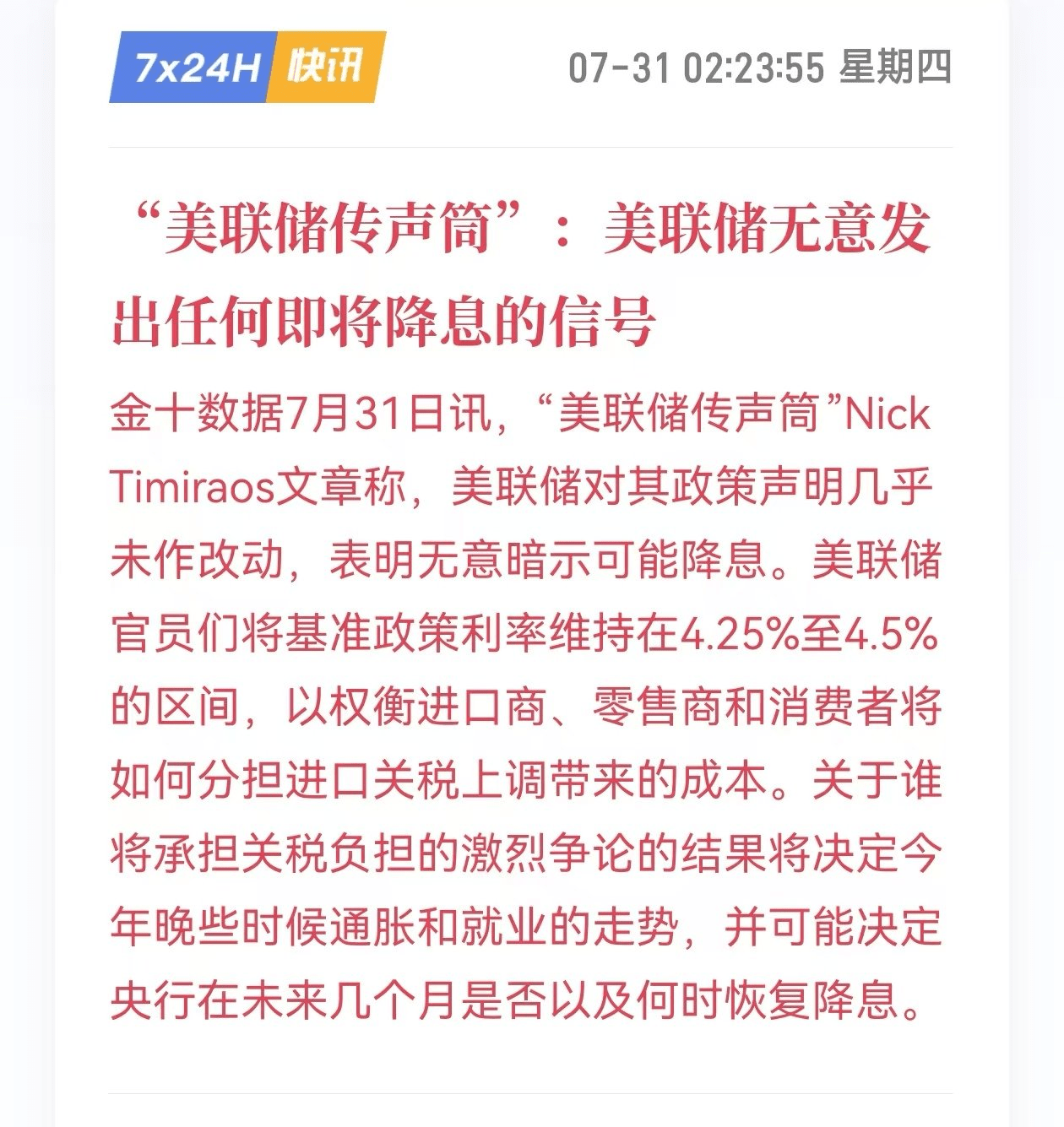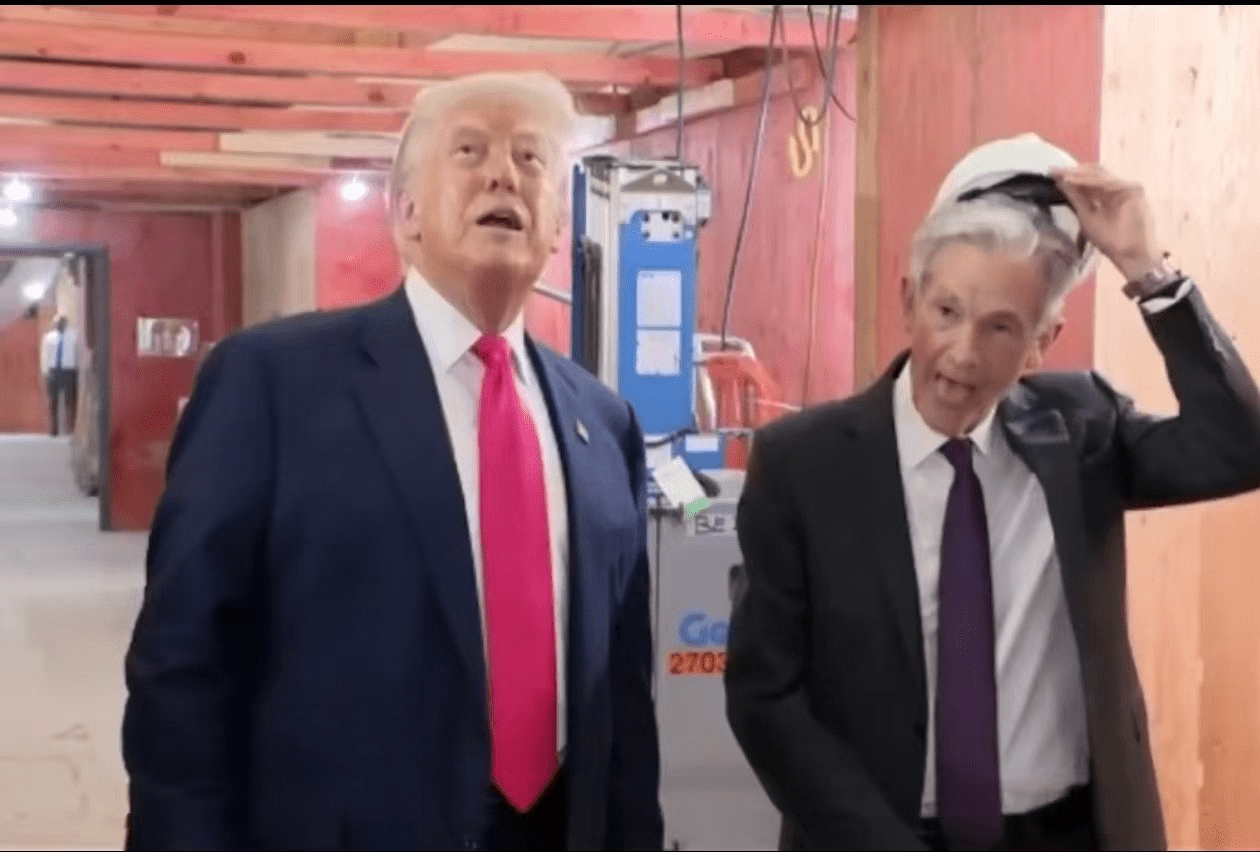1. Verification of Core Phenomena
Phenomenon 1: When U.S. stocks rise, Bitcoin does not follow; when U.S. stocks fall, Bitcoin falls.
Data Support:
In July 2024, the Nasdaq and S&P 500 reached historical highs again, but Bitcoin only maintained a sideways trend without significant increases.
In November 2024, the Bitcoin Fear and Greed Index reached 94 (bubble warning), followed by three weeks of market fluctuations, indicating that Bitcoin is more easily influenced by sentiment rather than directly following U.S. stocks at high levels.
Downward Linkage: In July 2025, the Federal Reserve maintained interest rates but strengthened its hawkish stance, leading to a temporary pullback in U.S. stocks, with Bitcoin dropping synchronously, showing resonance in risk assets.
Phenomenon 2: Positive earnings reports only indirectly transmitted, crypto market is in a 'difficulty mode.'
META and MSFT Earnings Reports:
META's Q2 revenue is $39.071 billion (+22.1%), net profit increased by 72.89%, driven by advertising revenue and AI business growth.
Microsoft Azure benefits from AI demand, but Bitcoin only benefits from sentiment boost, without direct benefits.
Crypto Market Status:
Bitcoin's candlestick chart shows that neither bulls nor bears have taken action, and the market lacks a clear direction, consistent with users' description of a 'difficulty mode.'

2. Analysis of Key Driving Factors
(1) Federal Reserve Policies and Macroeconomic Environment
Interest Rate Decision: In July 2025, the Federal Reserve maintains the interest rate at 4.25%-4.5%, but the dot plot indicates a possible three rate cuts this year, with the market expecting the first cut in September or November.
Inflation Data: U.S. June CPI year-on-year +3.2% (slightly above expectations), Core CPI +3.8%, Powell emphasizes that inflation remains high and policy adjustments need to be cautious.
Impact: A hawkish stance suppresses the upside potential for risk assets, but rate cut expectations support long-term liquidity, with Bitcoin influenced by dual sentiments.
(2) Market Sentiment and Capital Flow
Fear and Greed Index: On July 27, the index was 72 (greed zone), significantly up from last month's 61, mainly driven by the easing of Mt. Gox selling pressure and the Trump effect.
Capital Flow: The U.S. stock earnings season attracts capital inflows into technology stocks, while Bitcoin sees a weakened willingness to invest due to a lack of direct positive catalysts.
(3) Policy and Geopolitics
Trump's Tariff Policy: A 40% tariff increase on Brazil and a 15% tariff agreement with the EU, driving fluctuations in the dollar index and indirectly affecting the crypto market.
Digital Asset Regulation: The White House proposed taxing U.S. citizens' overseas crypto accounts, and policy uncertainty suppresses Bitcoin's upward momentum.
3. Contradictions and Explanations
Contradiction 1: Enhanced long-term correlation vs. short-term asymmetric linkage
Data: Since 2017, the correlation coefficient between Bitcoin and the S&P 500 has risen, but after the FTX incident (November 2022), it showed a negative correlation (correlation coefficient -0.65).
Explanation: In the long term, the entry of institutions and the approval of ETFs (such as the Coinbase direct listing rules) strengthen the connection between the two; in the short term, it is influenced by event-driven factors (such as earnings reports, policies), leading to divergence.
Contradiction 2: The failure of Bitcoin as a 'hedging asset'
Data: In March 2024, during the Silicon Valley Bank crisis, Bitcoin fell by 20%, failing to demonstrate its safe-haven properties.
Explanation: The liquidity of Bitcoin is increasingly correlated with traditional markets and is more susceptible to capital withdrawal during extreme risk events.
4. Future Outlook and Strategy Suggestions
(1) Market Trends
U.S. Stocks: After the Nasdaq and S&P 500 hit new highs, caution is warranted about pullback risks, focusing on August non-farm payrolls and CPI data.
Bitcoin: Short-term driven by Federal Reserve policies and sentiment, long-term needs to break the resistance level of $45,000, with attention to ETF approval progress and institutional holdings changes.
(2) Investment Strategy
U.S. Stocks: Focus on technology stocks (such as META, MSFT) and the AI industry chain, using volatility (like the VIX index) to aid in timing.
Bitcoin: Combine the Fear and Greed Index with on-chain data (like exchange inflows and outflows), gradually accumulate when the index falls below 25, and gradually reduce positions after breaking 75.
(3) Risk Points
The Federal Reserve's decision to cut rates early or delay cuts triggers market volatility.
Progress on digital asset regulatory policies (such as taxing overseas accounts in the U.S.).
Summary: The correlation between U.S. stocks and Bitcoin exhibits characteristics of 'long-term relevance, short-term divergence,' with core driving factors being Federal Reserve policies, market sentiment, and macro data. Investors should focus on event-driven opportunities while optimizing strategies using sentiment indicators and capital flows.

